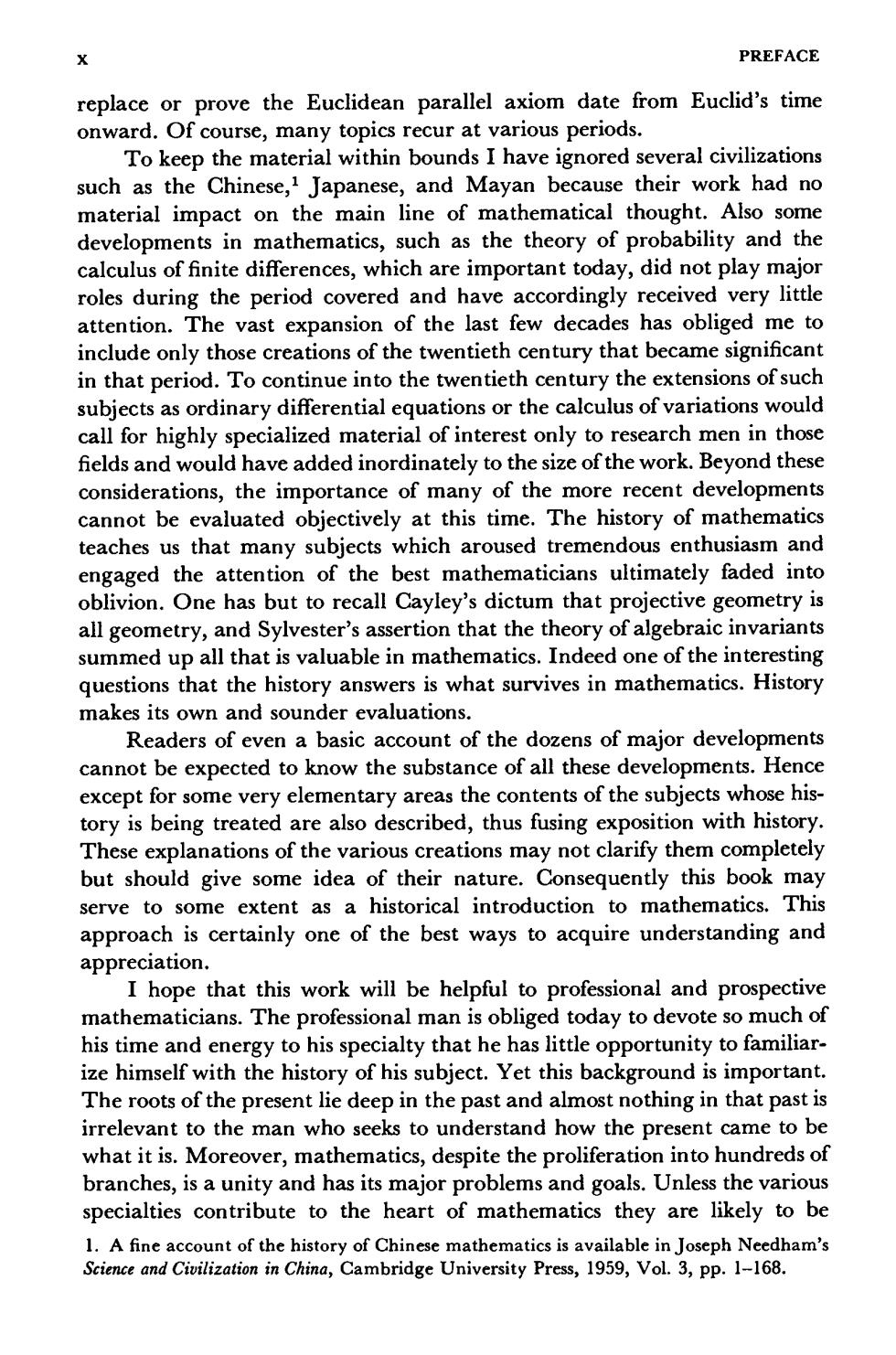正在加载图片...

PREFACE replace or prove the Euclidean parallel axiom date from Euclid's time onward.Of course,many topics recur at various periods. To keep the material within bounds I have ignored several civilizations such as the Chinese,1 Japanese,and Mayan because their work had no material impact on the main line of mathematical thought.Also some developments in mathematics,such as the theory of probability and the calculus of finite differences,which are important today,did not play major roles during the period covered and have accordingly received very little attention.The vast expansion of the last few decades has obliged me to include only those creations of the twentieth century that became significant in that period.To continue into the twentieth century the extensions of such subjects as ordinary differential equations or the calculus of variations would call for highly specialized material of interest only to research men in those fields and would have added inordinately to the size of the work.Beyond these considerations,the importance of many of the more recent developments cannot be evaluated objectively at this time.The history of mathematics teaches us that many subjects which aroused tremendous enthusiasm and engaged the attention of the best mathematicians ultimately faded into oblivion.One has but to recall Cayley's dictum that projective geometry is all geometry,and Sylvester's assertion that the theory of algebraic invariants summed up all that is valuable in mathematics.Indeed one of the interesting questions that the history answers is what survives in mathematics.History makes its own and sounder evaluations. Readers of even a basic account of the dozens of major developments cannot be expected to know the substance of all these developments.Hence except for some very elementary areas the contents of the subjects whose his- tory is being treated are also described,thus fusing exposition with history These explanations of the various creations may not clarify them completely but should give some idea of their nature.Consequently this book may serve to some extent as a historical introduction to mathematics.This approach is certainly one of the best ways to acquire understanding and appreciation. I hope that this work will be helpful to professional and prospective mathematicians.The professional man is obliged today to devote so much of his time and energy to his specialty that he has little opportunity to familiar- ize himself with the history of his subject.Yet this background is important. The roots of the present lie deep in the past and almost nothing in that past is irrelevant to the man who seeks to understand how the present came to be what it is.Moreover,mathematics,despite the proliferation into hundreds of branches,is a unity and has its major problems and goals.Unless the various specialties contribute to the heart of mathematics they are likely to be 1.of the history of Chnes mathematics is available in Joseph Needham's Scie Cambridge University Press,1959,Vol.3 3,Pp.1-168